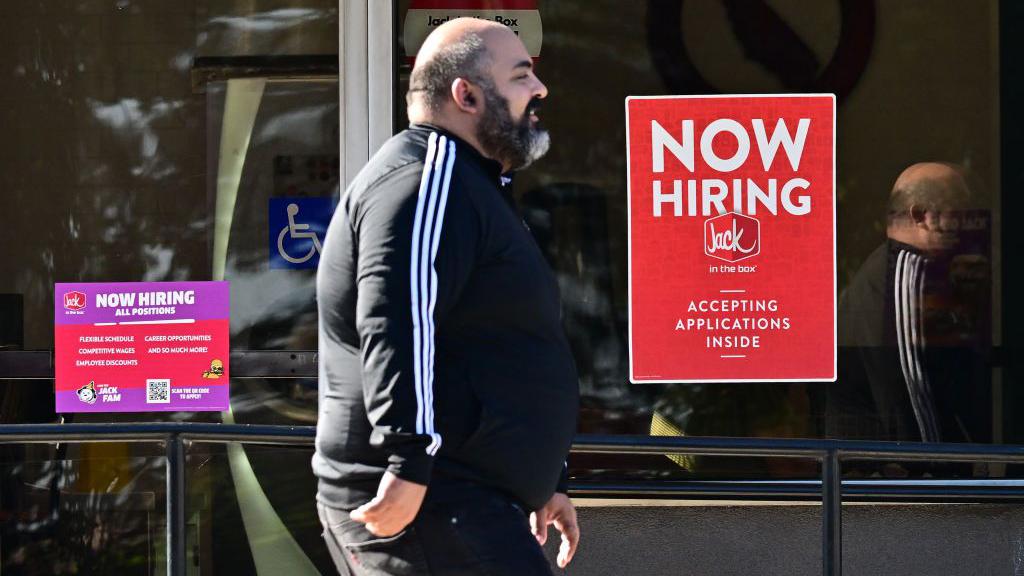U.S. Jobs Rebound Surprises With Strong September Hiring
By
Calder Monroe
Last updated:
November 21, 2025
First Published:
November 21, 2025

Photo: BBC
The long-delayed September employment report finally offers a clearer snapshot of how the U.S. labor market was performing before the 44-day government shutdown brought federal data collection to a halt. The numbers show a labor market that was more resilient than expected, even as the unemployment rate climbed to its highest point in nearly three years.
A Stronger-Than-Expected Rebound
The economy added 119,000 jobs in September, a sharp turnaround from August’s revised figure showing a loss of 4,000 positions. Economists had forecast just 50,000 new jobs, reflecting concerns that hiring would slow as elevated interest rates, political uncertainty, and inconsistent economic indicators weighed on business confidence. July’s total was also revised down to 72,000, reinforcing the view that job growth throughout the summer was weaker than originally thought.
Despite this, the September rebound suggests employers were still willing to expand payrolls modestly heading into autumn. Health care once again led the way with 43,000 new jobs, continuing its year-long trend of solid monthly gains. Bars and restaurants added 37,000 positions as consumer spending on dining held steady, and social assistance roles increased by 14,000.
On the downside, transportation and warehousing cut 25,000 jobs as parcel volumes slowed and freight demand cooled. The federal government shed another 3,000 positions, contributing to a year-to-date loss of 97,000 roles in the sector. Professional and business services dropped 20,000, driven largely by a steep decline of 16,000 in temporary help services.
Unemployment Rises but Workforce Participation Grows
The unemployment rate rose to 4.4 percent in September, the highest since October 2021. While this uptick raised concerns, a closer look at the underlying data paints a more nuanced picture. According to the household survey, employment actually climbed by 251,000, while the labor force grew by a substantial 470,000, reaching a record 171.2 million participants. The participation rate ticked up to 62.4 percent, its strongest level since May.
Full-time employment surged by 673,000, signaling that many workers moved into more stable roles. Part-time jobs, meanwhile, fell by 573,000, a sign that the labor market was shifting toward higher-quality positions before the shutdown disrupted reporting.
Wage data showed average hourly earnings rising 0.2 percent in September and 3.8 percent from a year earlier. Both figures point to steady but cooling wage pressures—an encouraging sign for Federal Reserve officials watching for progress in slowing inflation.
Market Reaction and Fed Implications
Financial markets interpreted the report as broadly positive. Stock futures gained as investors welcomed stronger-than-expected payroll growth. Treasury yields moved slightly lower, reflecting expectations that rising unemployment and moderate wage growth could keep hopes for a December rate cut alive, albeit faintly.
Fed policymakers will not receive another jobs report before their December 9–10 meeting, making this release a critical—if backward-looking—input into their decision-making. Minutes from the October meeting suggested officials were hesitant to continue cutting rates without clearer data, so the mixed signals in this report may reinforce a cautious stance.
Initial jobless claims for the week ending November 15 came in at 220,000, down 8,000 from the previous week and below expectations. This indicates that layoffs remain limited even as hiring slows, reinforcing the idea that employers are reluctant to reduce staff during a period of political and economic uncertainty.
Looking Ahead
With September’s long-awaited numbers now published, the Bureau of Labor Statistics is preparing to release jobs data for October and November simultaneously on December 16. However, October’s report will not include the standard unemployment rate since the household survey could not be completed during the shutdown. This will complicate assessments of how the labor market has evolved since early autumn.
Altogether, the September report shows a workforce that was stabilizing, not weakening, heading into the shutdown—marked by modest job growth, rising participation, and an unemployment rate lifted partly by Americans reentering the labor force. While the figures do not fully capture current conditions, they offer a valuable baseline for understanding how the labor market may shift once real-time data begins flowing again.
Popular articles
Subscribe to unlock premium content
Why Some People Hire Professional Bystanders to Simulate Social Interaction in Public Spaces
.png)
The Rise of Micro-Memorials People Paying to Preserve Tiny Personal Moments in Luxury Miniature Sculptures
.png)
The Market of Paying Strangers to Share Their Most Embarrassing Stories in a Private Setting
.png)
Why Some People Hire Professional Bystanders to Simulate Social Interaction in Public Spaces
.png)
The Rise of Micro-Memorials People Paying to Preserve Tiny Personal Moments in Luxury Miniature Sculptures
.png)
Why Some People Hire Professional Bystanders to Simulate Social Interaction in Public Spaces
.png)








